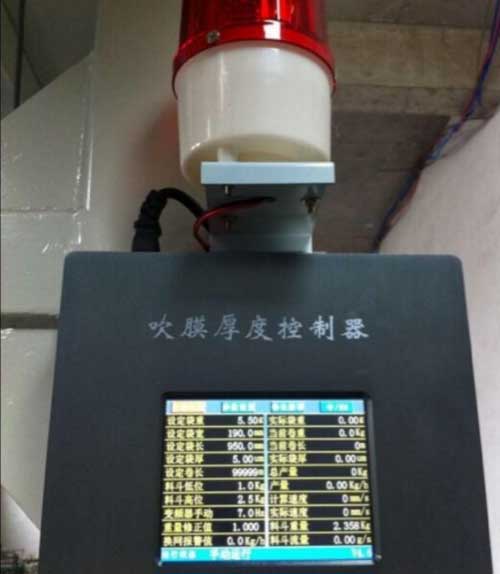ZHEJIANG CHAOXIN MACHINERY TECHNOLOGY CO., LTD.
Booth No:A3-3428
Time: 19-22 November 2025
Add: Jakarta International Expo Kemayoran, Indonesia
WEB: www.zjchaoxin.com

ZHEJIANG CHAOXIN MACHINERY TECHNOLOGY CO., LTD.
Booth No:A3-3428
Time: 19-22 November 2025
Add: Jakarta International Expo Kemayoran, Indonesia
WEB: www.zjchaoxin.com

The rotational speed of the main machine is closely related to the film thickness. Generally, the faster the rotational speed of the main machine, the faster the feeding speed, and the thicker the film; conversely, for the traction, the faster the pulling speed, the thinner the film. During the blown film process, these two processes cooperate with each other and are one of the main ways to control the film thickness. For example, in some actual productions, operators will adjust the rotational speeds of the main machine and traction reasonably according to the required film thickness to achieve the desired film thickness.
To achieve good tensile strength in both the transverse and longitudinal directions of the blown film, the blow-up ratio (BUR) and the draw-down ratio (DDR) need to reach a certain proportion. If the bubble is unstable, it is very likely that the BUR is too large. Reducing the DDR can reduce the die gap. For example, by adjusting the equipment parameters to reduce the die gap, the DDR can be adjusted accordingly. In actual production, operators need to adjust the BUR and DDR according to the specific performance of the film, such as stability and tensile strength, to ensure that the quality of the blown film meets the requirements.

The die temperature plays an important role in adjusting the film thickness. Appropriately increasing the die temperature can increase the fluidity of the plastic, making the film thinner; reducing the die temperature will reduce the fluidity of the plastic, making the film thicker. For example, during the production process, when a thinner film is required, the die temperature can be appropriately increased to allow the plastic melt to flow out of the die more smoothly, thereby reducing the film thickness. Conversely, when a thicker film is required, the die temperature is reduced to decrease the fluidity of the plastic and increase the film thickness.
The die gap directly determines the width and thickness of the plastic melt at the die exit. When the film is too thick, the die gap can be appropriately reduced to decrease the outflow of the plastic melt, thereby thinning the film; when the film is too thin, the die gap can be appropriately increased to increase the outflow of the plastic melt and thicken the film. In actual operation, operators need to accurately adjust the die gap according to the real-time thickness of the film to ensure that the film thickness meets the production requirements.
The cooling air ring of the blown film machine controls the size of the cooling air volume by adjusting the ventilation movable blocks on the ventilation holes. The external detection equipment measures the film thickness in real time and adjusts the ventilation movable blocks in the areas where the film is too thick or too thin according to the film thickness. When a certain area of the film is too thick, the ventilation volume of the corresponding ventilation movable block in this area is reduced, slowing down the cooling speed of the film, and gradually thinning the film thickness in this area; when a certain area of the film is too thin, the ventilation volume of the corresponding ventilation movable block in this area is increased, accelerating the cooling speed of the film, and gradually increasing the film thickness in this area. In this way, the film thickness can be made uniform and the quality of the film can be improved.

The width of the plastic bag is mainly controlled by the amount of air blown. When gas is added to the circular film, the film will rise in a straight line and pass through the film stabilizer to stabilize the film. If the film is not wide enough, air is added; if it is too wide, air is released. In actual production, by precisely controlling the addition and discharge of gas, the width of the film can be effectively adjusted to meet different production requirements.




